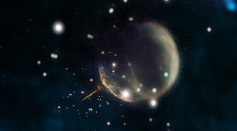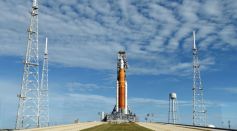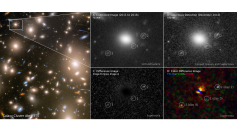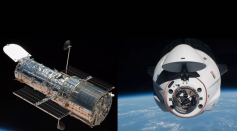SPACE

First-Time NASA Astronaut Spacewalkers Work Outside the Space Station for 7 Hours To Assemble a Mounting Bracket for Future Solar Arrays Upgrade [WATCH]

Weird Pulsar Neutron Star Travels Through the Milky Way Leaving a 13-Light Years Cosmic Trail

Atmospheric Gases Look Like a Celestial Snake Slithering on Sun’s Surface, But May Possibly Hint a Huge Explosion

SpaceX's Most Powerful Starship 'Super Heavy Rocket' Ignites 'Full Test Duration of 14 Engines' [Watch]

SpaceX Falcon 9 Launched 2 New Big Telecom Satellites on its 14th Mission on Saturday

Space Force X-37B Craft Landed Back to Earth After Two Years in the Space

Uganda's First-Ever Satellite Has Equipment for 3D Bioprinting Human Organs to Print Tissues in Space

NASA Is Getting Ready for Artemis I's Moon Rocket Launch This Week

A Decade With the Solar's Center: Witness the Breathtaking Time Lapse of the Sun

CAPSTONE Spacecraft First To Enter Deep Space Route, Supporting Artemis' Missions

NASA's Hubble Space Telescope Captures Image of a Supernova Exploding 11 Billion Years Ago

Case of 'Missing' Planets Solved: Is Planetary Migration The Culprit?

NASA Hubble Space Telescope Finds Exploding Supernova; Scientists Explain Cooldown

Atlas V Rocket Launches NOAA's JPSS-2 Weather Satellite, Mars Inflatable Heat Shield to Space
Most Popular

Largest Known Volcanic Aquifer Discovered Beneath Oregon's Cascades

New 'Supergiant' Sea Bug Found in South China Sea, Named After Darth Vader

Mediterranean Sea Was Refilled by a Catastrophic Flood Millions of Years Ago

Mysterious Cosmic Waves That Sound Like Birds Detected in Unexpected Space Region





